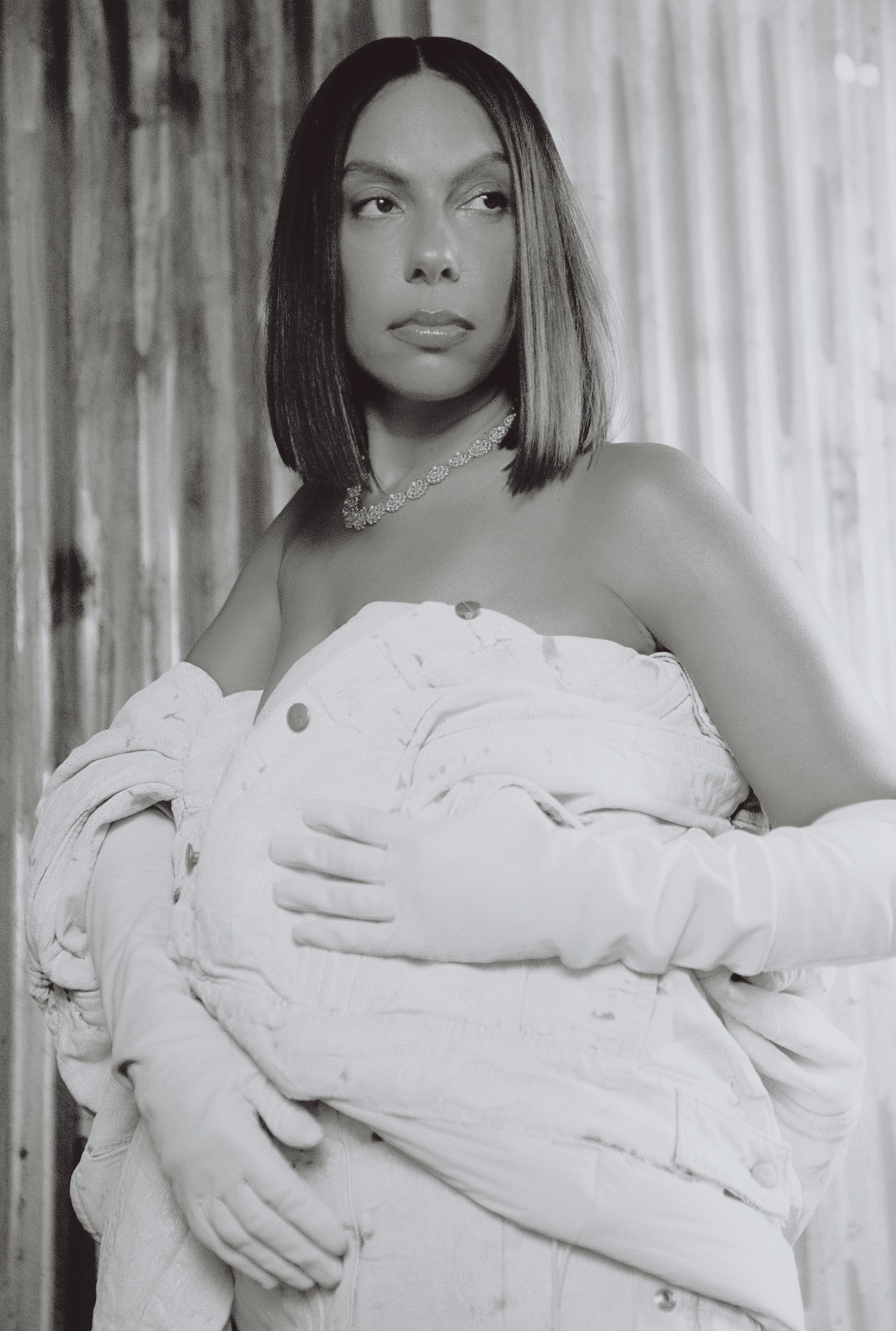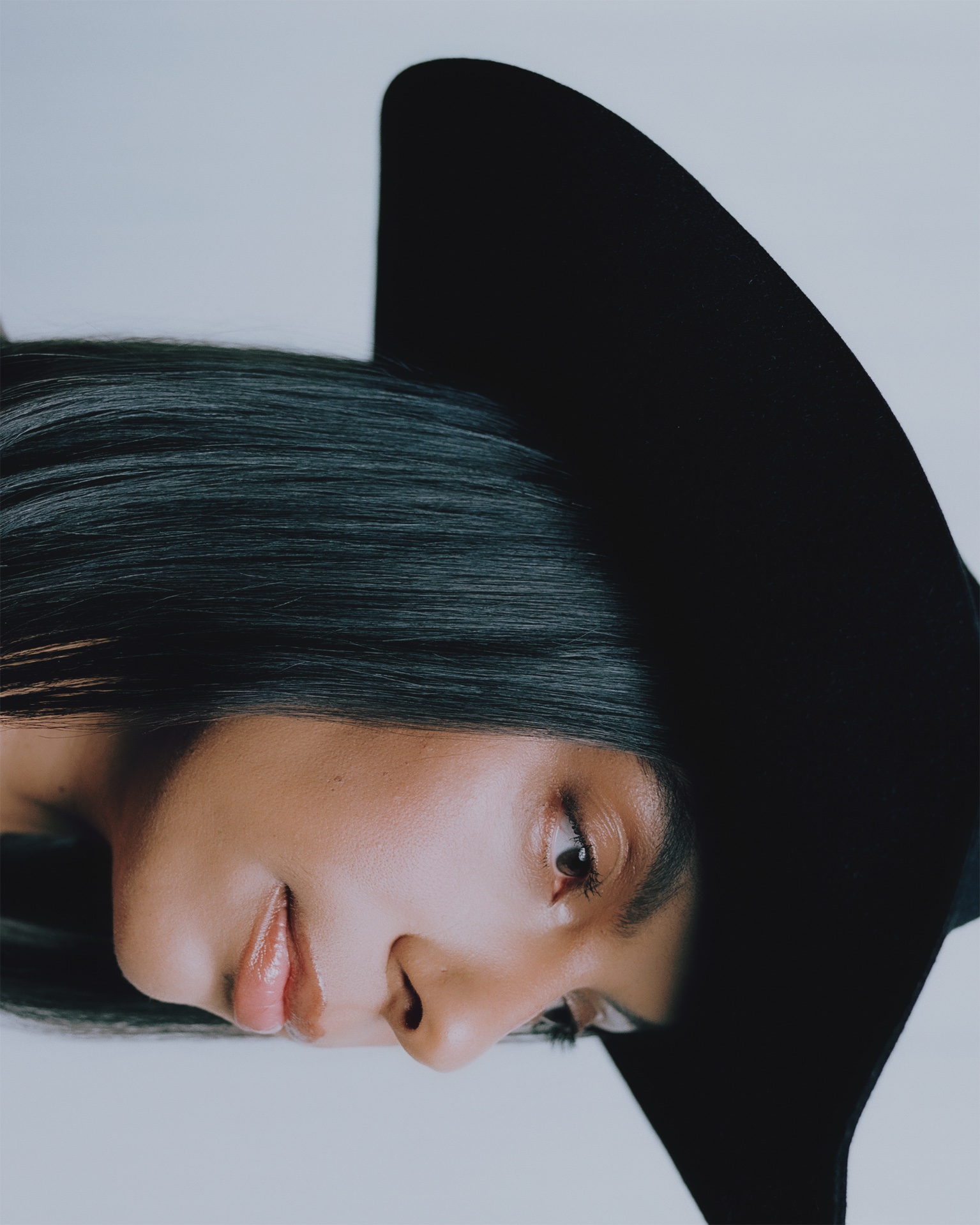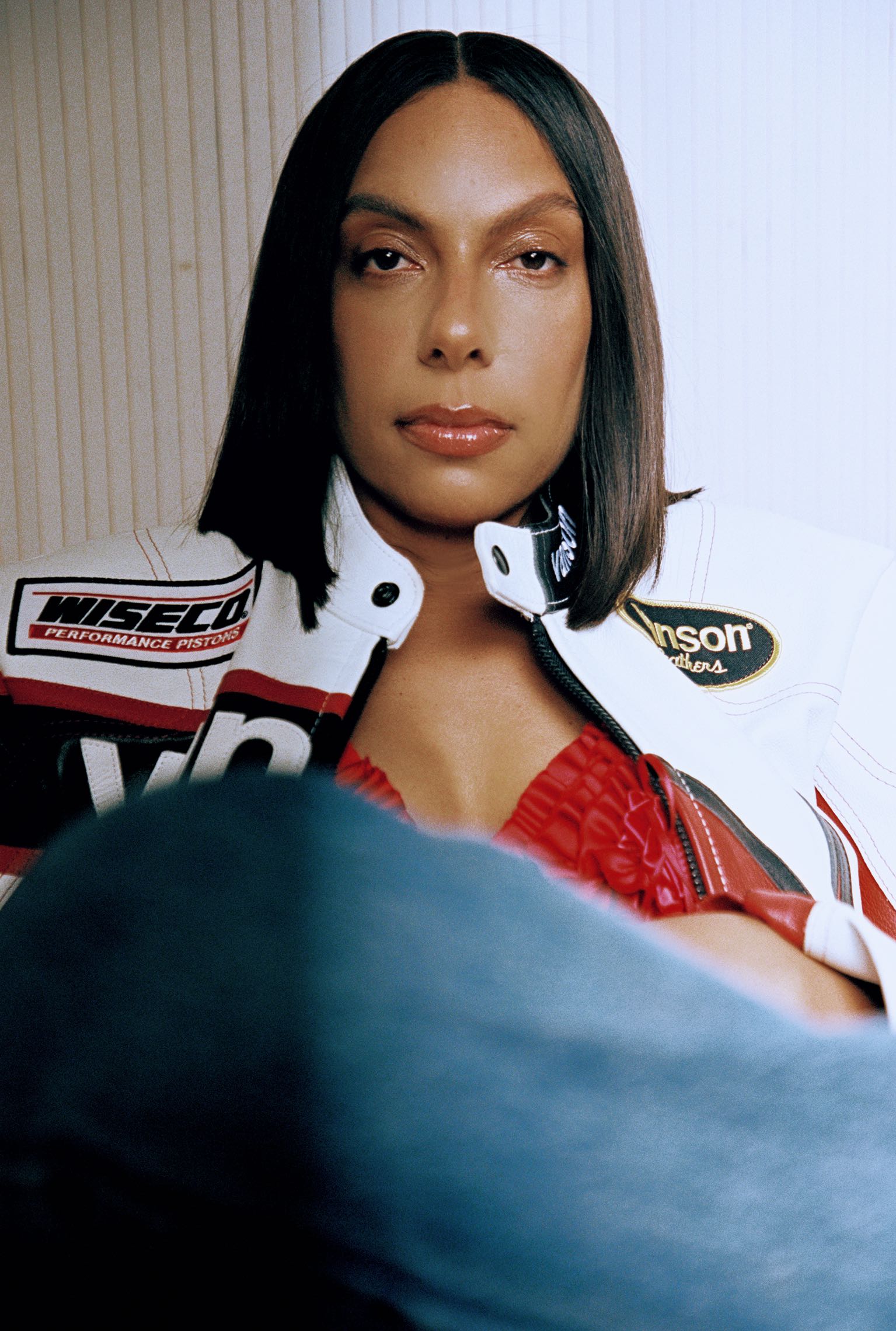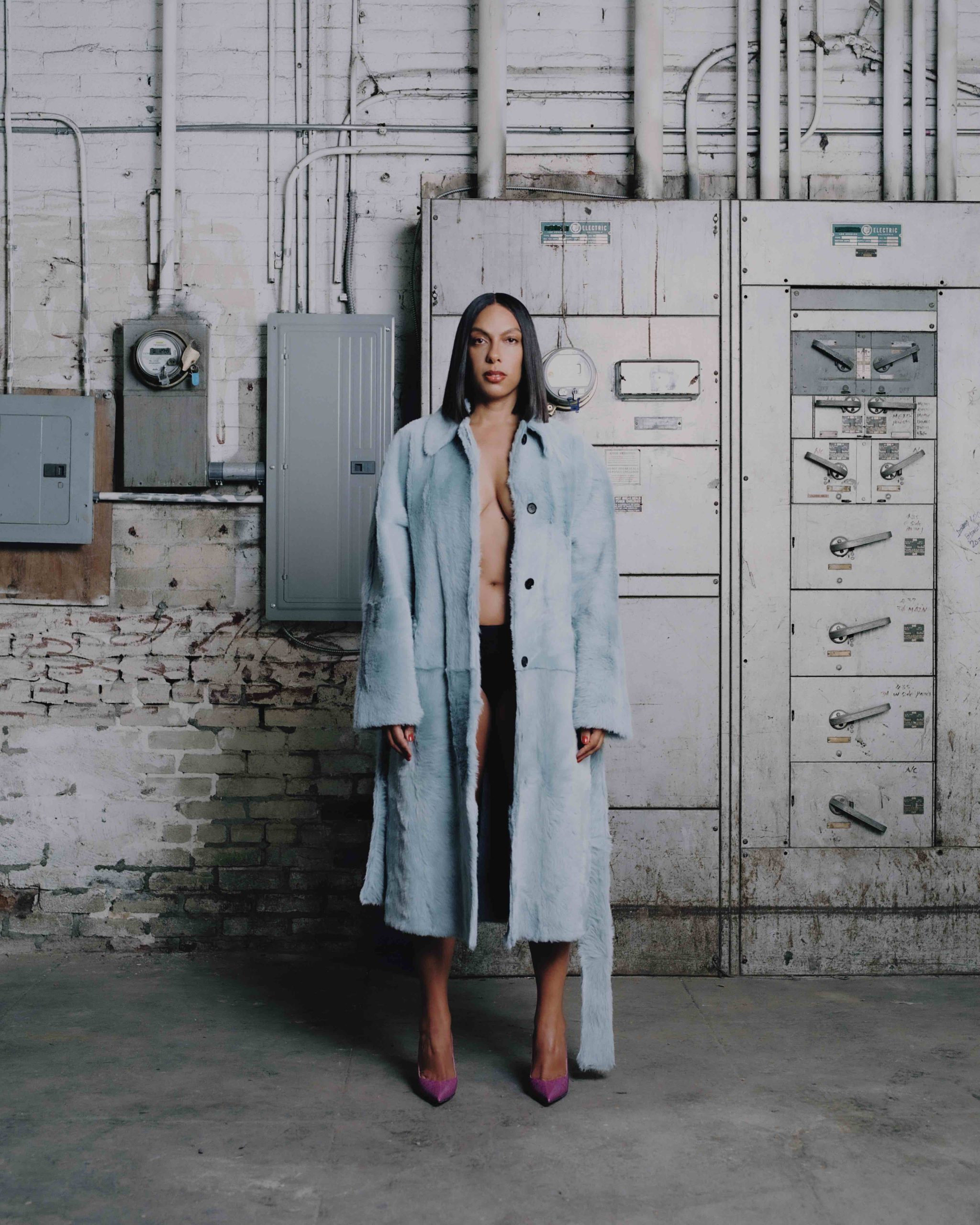From 2019’s Queen & Slim, to episodes of Insecure and Master of None, Melina Matsoukas has emerged as one of the most exciting directors of today, but she’s been playing a much longer game. When thinking about some of the biggest music videos between the years 2007-2016, there’s a high chance that they are the work of Matsoukas – from Lady Gaga’s breakout hit 2008 Just Dance to Solange’s Losing You from 2012. So influential were Matsoukas’s videos of this period that she racked up multiple MTV VMAs, two Grammys, and the Grand Prix award for ‘Excellence in Music Video’ at 2016’s Cannes Lions Festival. More recently, her work on Issa Rae’s Insecure and Aziz Ansari’s Master of None has been met with equal praise. Matousokas’s 2017 ‘Thanksgiving’ episode for Master of None received much acclaim, co-written by Azzari and Lena Waithe, and based on the latter’s experience of coming out as queer.
Shortly after working together on the show, Waithe approached Matsoukas with the script for Queen & Slim. In the film, Jodie Turner-Smith and Daniel Kaluuya star as an unlikely pairing. After a forgettable first date, an encounter gone wrong with a racist white police officer sees Kaluuya and Turner-Smith’s characters forced – out of a lack of alternatives in a country unlikely to see their version of events – to go on the run. Queen & Slim is a story of companionship and love, whether romantic, familial, sororal or shared amongst a wider community. On their journey from Ohio to Cuba, ‘Queen’ and ‘Slim’ encounter many people along the way, who invest in the couple with a sense of hope and power. A photograph taken of the two atop a car gets turned into a symbol of what they have come to represent, especially when the film ends with the couple having been betrayed just as their journey seems to be coming to a successful conclusion.
Waithe has previously explained that the movie was inspired and motivated by the deaths of Black people at the hands of the police and ‘vigilantes’. Given the film’s release prior to 2020, when the deaths of George Floyd and Breonna Taylor instigated a resurgence of the Black Lives Matter movement across the globe, did Queen & Slim’s relevancy change? “I wouldn’t say the relevancy has changed,” Matsoukas demurs, citing Spike Lee’s Do The Right Thing (1989) as a movie focussing on the same issues, thirty years prior. “Obviously a lot has come to light since [Queen & Slim] for some people. I don’t know if the world opened up in my eyes, it just became more in your face and harder to ignore.” Matsoukas adds to this that she “would like the film not to be as relevant as it is, but that takes real change and real revolution to make that happen, and I don’t know if that’s something that’s going to happen.” But part of that fight, the director says, is creating movies that “spark conversation, and I think we did that successfully.” Using film to leave an impression on the audience is something that Matsoukas attributes to growing up with parents who were “really politically progressive. It was always important to me to create some sort of change in the world. And I decided to put that into my art and use art as a way to speak out and fight back to challenge the status quo.” Her upbringing in New York also provided the inspiration that, as a director, she still regularly turns to today. “I was definitely influenced by New York and growing up in a very diverse household, having access and being part of so many different cultures. I’m a Black woman for sure, but my mom is Cuban and Jamaican, and my dad is Greek and Jewish, and so having this collision of cultures raise me is deeply important.”

Matsoukas attributes growing up in New York surrounded by a melange of culture as giving her a “respect for art and beauty in places that you don’t necessarily look for it.” She adds that it’s important for her to highlight subcultures and places that “aren’t necessarily on the grand landscape of life – to bring attention to these areas and people”. That much is evident in Queen & Slim particularly in the roadside club scene where Kaluuya and Turner-Smith are able to steal a moment of safety and solitude. But it’s also evident in earlier work, like the music video for We Found Love, Rihanna’s 2011 song with Calvin Harris. The washed-out video caused a stir on its release for its depiction of drug use and so on, but it also captured the kind of grunge aesthetic that was so pervasive at that time (the video opens with a monologue by Agyness Deyn – one of the poster girls of that look, then at the height of her fame). But We Found Love was also filmed in New Lodge, a working class, Catholic community in the north of Belfast – a city with a complicated history of hardship and division. Later in our conversation, Matsoukas describes “finding beauty in darkness – going into certain areas and neighbours, finding the humanity in those places and showing them as enthralling lively communities. I think that’s another theme you’ll see in my music videos, Insecure and Queen & Slim, and that’s probably [also] a product of where I grew up.”
Matsoukas says she always wanted to direct music videos: “I grew up an MTV baby recording videos on my VCR.” It was the “collision” of music and visual storytelling that the director found so appealing. As well as We Found Love, Matsoukas directed five other videos for Rihanna between 2009 and 2011 (some of them co-directed by the artist, too), from Rude Boy to You da One. Not only was this a high point for Rihanna’s output (musically at least), the visuals that accompanied the songs were equally unforgettable. Like Proust’s madeleine, upon hearing the first seconds of We Found Love, the opening moments of the music video also come to mind.
Throughout this period, Matsoukas worked frequently with Beyoncé; it was Beyoncé who gave Matsoukas her first proper break, entrusting the young director with the videos for four of the songs off her second solo album, B’Day (2006). Matsoukas’s last listed directing credit for a music video is Beyoncé’s Formation from 2016’s acclaimed visual album, Lemonade. The artist approached Matsoukas with the concept for the video to also explain its wider role within the album. In the opening shot, Beyoncé can be seen atop a submerged police car that slowly sinks further as the video plays out (a stark and vivid reference to the 2005 Hurricane Katrina and the abandonment of the majority Black community of New Orleans in its wake). It was Formation – a celebration of power, Black and also of Beyoncé’s as an artist – that won the Grand Prix at Cannes Lions and a Grammy, amongst many other awards.
Considering that, over the years, Rihanna and Beyoncé have both honed such different styles – visually and musically – how did Matsoukas work with artists to bring their visions to life through music videos? “I honestly think my approach is the same with whatever medium I’m working with,” she says. “I always start with research and so with music videos, that research is: What are they influenced by? What are they trying to say?” For Matsoukas, she sees her role as a director as “telling someone else’s story. I’m never telling my own, whether it’s a script, a music video, or commercial; I’m telling the story of a brand, of a person, or a place. I have to have a deep understanding of that story to even approach the project and make sure that it’s true to who they are,” Matsoukas adds “because they’re the ones who have to perform it. So, it has to be authentic to their voice.” The director describes each project she works on as akin to a thesis – diving into the research and building up a fuller understanding of not just the story she’s telling, but also a deeper sense of the person behind that story.

Though she approaches her work from the standpoint of bringing someone else’s story and vision to life, does she ever set out to put her own mark on a project? “I like to say it’s someone else’s story, but innately there’s going to be pieces of me that I can’t help but put in. I also choose to work with people or on stories that I feel passionate about and that speak to me in some way.” By working with people whose outlook aligns with her own, the director says it is more natural for her to contribute elements of her own directorial style into that work. “I think my use of colour and black and white is very consistent,” Matsoukas says. She credits her background in cinema- tography and directing as something that has nurtured her understanding of visual storytelling.
Throughout our conversation, there’s something that pops up time and again: storytelling. Of course, that makes perfect sense – Matsoukas is a director, after all. But we discuss the different elements that can be used to achieve this. In Queen & Slim, for example, the soundtrack is for the most part played from the radio of the cars that the film’s protagonists drive on their journey from Ohio to Florida. The music that ‘Queen’ and ‘Slim’ play – and that we as viewers hear – sometimes becomes part of their dialogue; other times, it helps move the film from A to B (a feat also achieved by the film’s score, composed by Dev Hynes). Matsoukas says that the soundtrack for Queen & Slim was “one of my greatest projects – I picked and A&R’d the whole thing, and was even telling artists how to edit their songs… I think they were completely through with me!” Though Matsoukas notes that music is another form of storytelling – of communicating experience and feeling – she says that she doesn’t like to become dependent on it as a narrative device. “When I edit, I don’t use any music because I want to be able to make sure that the scenes can stand by themselves and that the performances are strong.” Rather, music is something to be layered on, to make the story more powerful. “It also puts you in time and place – where am I? Whose voice am I hearing? What does this sound like? It’s another way to create an environment and understand the people in that place or culture.”
Narrative can also be communicated through clothing, Matsoukas says, saying that she “loves the story that lives within clothes. Obviously it’s another great tool when filmmaking, whether it’s for music videos, TV or film.” Clothing is a device through which we can understand characters in an unspoken way. In Queen & Slim, it becomes crucial in communicating a key moment of transition. Both ‘Queen’ and ‘Slim’ are forced to relinquish the clothes that have defined who they are up until that point, while ‘Queen’ has her braids removed and ‘Slim’ has his head shaved. In doing so, the protagonists can evade detection as news of their story and warrants for their arrest spread. But it’s a moment with greater significance to the narrative too. As Matsoukas says, “that was a huge transition, especially for her. She starts off really conservative and all in white – somewhat angelic but sophisticated. And then she becomes very vulnerable to him.” In that way, the singular outfit change is a defining point of the movie – it represents a new stage in the characters’ relationship, and a shifting of gears as their need to go undercover increases in urgency.
“You only have one chance to show where this person started – the entrance and the exit, right? I knew how important those decisions were in terms of clothing.”
For Queen & Slim, Matsoukas worked with costume designer, Shiona Turini, with whom she has previously collaborated for the Formation video and on Insecure. “We both believe deeply in the storytelling that lies within costumes,” the director says, “so it’s always a great collaboration in which we’re pushing each other to elevate the story.” What does collaboration look like to Matsoukas, especially considering some of the huge talent she has worked with regularly over the years? “It’s always pretty consistent. First off, filmmaking is always about collaboration – it’s not a journey of one; it takes a community to tell a story whatever the medium is. That’s how I came into the craft – understanding the power of collaboration and respecting my teammates, what they bring to the table and their craft.”
Matsoukas adds that she looks for collaborators with whom she shares values, though not necessarily aesthetically speaking, “I like to be pushed,” she says, pushed in a way that will nurture the creativity of all those involved. But it’s crucial that there’s a clear understanding of where both parties are coming from. “I think I work with a lot of Black women because that’s who I am; we have a lot in common and we understand each other’s language. And they are also the people who have given me a chance in each medium I’ve gone into: Beyoncé would be the person in music videos who really elevated and started my career, and then Issa Rae in TV, and Lena Waithe with film. So, there’s always a certain amount of graciousness and respect I have for that relationship.”
Considering Matsoukas has been able to depend on Beyoncé, Issa Rae and Lena Waithe to open up new avenues for her, how important is it to champion those below her? “That’s really important,” she says. It’s for that reason that in 2021 Matsoukas founded de la revoluciøn, an artist collective of directors and photographers. She says the purpose of de la revoluciøn is to “cater to the next generation of voices,” and a glance at the roster of those currently represented by the collective confirms that to be the case. Amongst the range of talent already listed, there’s Nia DaCosta, director of 2021’s horror Candyman, and photographer Andre Wagner who shot that photograph of Queen and Slim that gets transformed into a mural in the film. As much as the collective is a way for Matsoukas to “create paths and empower other artists” it is also about providing mentorship and support; sometimes, the director’s role is just to be a cheerleader.
Despite the few big names who offered Matsoukas a hand up and an opportunity to enter new spaces, she says she didn’t have anybody to “help navigate me through all those different mediums and see how they could support each other.” But through de la revoluciøn, Matsoukas can now do that for other artists. “That’s my activism and my way of giving back – bringing diversity and inclusion into the industry, and providing a really safe space and community for artists to work within.” How much has the industry changed since Matsoukas started out in the mid-2000s? “There’s a long way to go, but there’s a lot more diversity. I think people are open to voices that come from different mediums. When I started out, it took me so long to break into film and TV because the music video was disrespected as an art form.” Matsoukas was told that she worked with musicians and so she wouldn’t know how to work with actors, or know how to tell a story – to which her response was that she’d prove that that was not the case. As Matsoukas says, “I started doing that in my music videos – telling stories, even in this small, short form.” At the time of its release in 2011, We Found Love was likened to a movie because of its structure and similarities with films like Danny Boyle’s Trainspotting (1996). Nonetheless, the director says, “it took a long time, some really powerful voices and a lot of luck to be able to break in at the right time and moment.”
It’s funny that music videos were regarded as a disrespected form because – at least from my own perspective as a young viewer at the height of Matsoukas’s music video peak – seeing the music of the biggest artists of the mid-2010s visualised in such an artistic, distinctive, creative way, had a lasting impact. To me, those videos are attached to a kind of visual journey of growing up. So, does Matsoukas see a legacy of her earlier work out in the world now? “Yeah, totally – I’d say that I’ve maybe made some bigger shifts in the culture through my music video work than any other medium. I’m really proud of where I began, the artists I got to collaborate with and the work that we created. It was also a time in the music industry where they spent a lot more money, so I got to have a lot of fun. I got to experiment and really hone my craft early in my career and that was really important.”
If there’s been a shift in the value placed upon music videos more recently that’s because, as Matsoukas points out, “the generation that grew up knowing the importance of them are now the ones starting to have power within the industry. When I was coming up, it wasn’t us who had the power to make decisions. As my generation grows up, we are more open and we have similar values.” The days of MTV that Matsoukas grew up on have long gone – the director attributes the music channel for her “affinity for colour and ‘80s and ‘90s culture” – and even its replacement, YouTube, has had to adapt to new formats as social media trends pop up (first there was videos in square format, and latterly, in reel-style). But a cursory glance at music videos for some of the biggest artists of 2022, it seems that it’s a format that’s still alive and well, especially the kind of longer form mini movie that Matsoukas contributed to with Beyoncé’s Lemonade.
When we speak, the series that Matsoukas has been working on for Apple TV is in post-production. The Changeling, adapted by Kelly Marcel and starring LaKeith Stanfield, is a fantasy horror series based on the 2017 novel by Victor Lavelle of the same name. Matsoukas says it’s a different kind of project for her. “It’s my foray into a bit of fantasy – but again, telling stories that you don’t really see.” She says that she doesn’t like to “live in one space; if I do a comedy, then I want to do a drama, and then do something that’s action.” That’s why she likes to move between commercials, film and TV – before adding that she’d maybe do a music video again at some point. “I really like to work in different mediums. I feel like there’s so many different aspects to who I am as a person and I need all of them to feed me.” How do the various mediums she works on differ? Though it’s all a form of storytelling, she says, “the way you choose to paint with your brushes is a little different, and that’s why I like [the variation].”

Matsoukas is also working on A Brief History of Seven Killings, an adaption of Marlon James’s 2017 novel which – as the director tries to summaries in one sentence – “is about the United States government’s fear of the spread of communism in the Caribbean and a foiled plot to kill Bob Marley because of his potential power to unite people.” Given our earlier discussion of film being Matsoukas’s form of activism, it’s a series that seems apt. Besides directing (of which there are many other projects in the works), she says that her focus is on de la revoluciøn. “It’s really enjoyable getting to work with other artists of colour and being able to give volume to their voice.”
“And then tomorrow,” Matsoukas adds, “I’m going to shoot another spot for Levi’s – so I’m also doing that I guess!” It sounds like she’s very busy, then – but the director is also carving out time to create more solid boundaries between work and life. “I’ve been enjoying taking breaks and finding time to spend with the people that I love, and I will continue to do that because it brings me great joy.” When I ask Matsoukas about the directorial style that she likes to bring to her work she mentions that, though she is not a pyromaniac, she “likes to blow things up and set things on fire’’ – that much may be true, but equally, she seems pretty good at bringing things – people – together.
